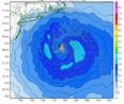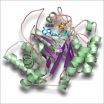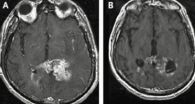(Press-News.org) WASHINGTON -- Researchers at the Naval Research Laboratory (NRL) Marine Meteorology Division (MMD), Monterey, Calif., have developed the Coupled Ocean/Atmosphere Mesoscale Prediction System Tropical Cyclone (COAMPS-TC™) model, achieving a significant research milestone in predictions of tropical cyclone intensity and structure.
While the predictions of the paths or tracks of hurricanes, more generally referred to as tropical cyclones (TC), have steadily improved over the last few decades, improvements in the predictions of storm intensity have proven much more difficult.
"Over the past two years, the COAMPS-TC model has shown to be the most accurate emerging research model for predicting tropical cyclone intensity," said Dr. Jim Doyle, research meteorologist, NRL Monterey. "There is no better example of these difficult challenges than the intensity predictions for Hurricane Irene this past August."
Producing very accurate intensity predictions during a real-time experimental demonstration of Hurricane Irene, COAMPS-TC intensity errors were six knots on average for a series of three-day forecasts, a clear improvement over the official National Hurricane Center (NHC) forecast and other operational models that ranged from 20-30 knots.
The successful predictions have demonstrated that Numerical Weather Prediction (NWP) models can outperform operational statistical-dynamic models that are based on climatology and previous behavior. It is further believed that NWP models, which explicitly predict the location, dynamics and intensity of a storm, will eventually provide the most promising approach to achieve accurate TC intensity and structure prediction.
Advancing further methodologies used for vortex initialization, data assimilation and representation of physical processes, COAMPS-TC is expected to become fully-operational in 2013 at the Navy's Fleet Numerical Meteorology and Oceanography Center (FNMOC) in Monterey. Considerable advancements have been made to several components of the modeling system including the data assimilation of conventional and special TC synthetic observations, vortex initialization, and representation of key TC physical processes such as air-sea fluxes, clouds and convection.
The COAMPS-TC project will potentially signal a paradigm shift in TC forecasting and is already making a strong impression on the forecasting community. Focusing on the development and transition of a fully coupled air-ocean-wave prediction system, the COAMPS-TC model includes nonhydrostatic atmospheric dynamics, multiple nested moving grids that follow the center of the storm and improved boundary layer and cloud physical parameterizations.
COAMPS-TC was first tested in real-time in support of two field campaigns sponsored by the Office of Naval Research (ONR). The Tropical Cyclone Structure-08 (TCS-08) conducted as part of The Observing System Research and Predictability Experiment (THORPEX) Pacific Asian Regional Campaign (T-PARC) in 2008 and the Impact of Typhoons on the Ocean in the Pacific (ITOP) in 2010, both of which took place in the Western Pacific. Additionally, COAMPS-TC advancements and real-time demonstrations in the Eastern Pacific and Western Atlantic have taken place through collaboration with the National Oceanic and Atmospheric Administration (NOAA) as part of the Hurricane Forecast Improvement Project (HFIP) -- a community-wide effort focused on improving operational hurricane prediction.
In June 2011, COAMPS-TC was one of nine worldwide winners of the inaugural High Performance Computing (HPC) Excellence Award presented at the ISC-11 International Supercomputing Conference in Hamburg, Germany -- an award presented annually to recognize noteworthy achievements by users of HPC technologies. As a result, COAMPS-TC was recognized for achieving 'a significantly improved model for tropical cyclone forecasting.' COAMPS-TC development benefited significantly from the Department of Defense HPC Modernization Program Office (HPCMO) computational assets at the Navy Defense Supercomputing Resource Center (DSRC) at Mississippi's Stennis Space Center.
Increasingly-sophisticated developmental versions of COAMPS-TC will continue to be demonstrated in real-time and in support of the Joint Typhoon Warning Center and the National Hurricane Center. A key additional enhancement will be a fully coupled ocean-atmosphere version in which the NRL Costal Ocean Model (NCOM) and the Wave Watch III (WWIII) will provide the ocean circulation and wave components, respectively.
The advancement in TC intensity forecasts with COAMPS-TC are based on the long-term S&T investment in mesoscale processes and model development from the NRL base program and the ONR Marine Meteorology Program. The understanding of tropical cyclone dynamics has been accelerated in recent years through several ONR-supported field observation campaigns that include Coupled Boundary Layers Air-Sea Transfer (CBLAST), TCS-08 and ITOP-10. The final technical push of COAMPS-TC model development came from a Rapid Transition Program project jointly supported by ONR and the Oceanographer of the Navy through PEO C4I&Space PMW-120. Advancements of COAMPS-TC and real-time demonstrations have also been supported by NOAA's Hurricane Forecast Improvement Project (HFIP).
INFORMATION:
NRL Monterey develops more accurate tropical cyclone prediction model
2011-11-21
ELSE PRESS RELEASES FROM THIS DATE:
Protection from severe malaria explained
2011-11-21
Why do people with a hereditary mutation of the red blood pigment hemoglobin (as is the case with sickle-cell anemia prevalent in Africa) not contract severe malaria? Scientists in the group headed by Prof. Michael Lanzer of the Department of Infectious Diseases at Heidelberg University Hospital have now solved this mystery. A degradation product of the altered hemoglobin provides protection from severe malaria. Within the red blood cells infected by the malaria parasite, it blocks the establishment of a trafficking system used by the parasite's special adhesive proteins ...
Chalmers scientists create light from vacuum
2011-11-21
Scientists at Chalmers University of Technology have succeeded in creating light from vacuum – observing an effect first predicted over 40 years ago. The results is published tomorrow (Wednesday) in the journal Nature. In an innovative experiment, the scientists have managed to capture some of the photons that are constantly appearing and disappearing in the vacuum.
The experiment is based on one of the most counterintuitive, yet, one of the most important principles in quantum mechanics: that vacuum is by no means empty nothingness. In fact, the vacuum is full of various ...
Enzymatic synthesis of pyrrolysine, the mysterious 22nd amino acid
2011-11-21
This press release is available in German.
With few exceptions, all known proteins are built up from only twenty amino acids. 25 years ago scientists discovered a 21st amino acid, selenocysteine and ten years ago a 22nd, the pyrrolysine. However, how the cell produces the unusual building block remained a mystery. Now researchers at the Technische Universitaet Muenchen have elucidated the structure of an important enzyme in the production of pyrrolysine. The scientific journal Angewandte Chemie reports on their results in its "Early View" online section.
Proteins ...
MU researchers develop tool that saves time, eliminates mistakes in diabetes care
2011-11-21
COLUMBIA, Mo. – In the fast-paced world of health care, doctors are often pressed for time during patient visits. Researchers at the University of Missouri developed a tool that allows doctors to view electronic information about patients' health conditions related to diabetes on a single computer screen. A new study shows that this tool, the diabetes dashboard, saves time, improves accuracy and enhances patient care.
The diabetes dashboard provides information about patients' vital signs, health conditions, current medications, and laboratory tests that may need to be ...
Colon cancer screening campaign erases racial, gender gaps in use of colonoscopy
2011-11-21
Since the 1970s, U.S. mortality rates due to colorectal cancer have declined overall, yet among blacks and Hispanics, the death rates rose. Evidence suggests that underuse of colonoscopy screening among these groups is one reason for the large disparities. In 2003, New York City launched a multifaceted campaign to improve colonoscopy rates among racial and ethnic minorities and women. A new study conducted by researchers at Columbia University's Mailman School of Public Health and the NYC Department of Health and Mental Hygiene demonstrates the notable success of the campaign. ...
A corny turn for biofuels from switchgrass
2011-11-21
Many experts believe that advanced biofuels made from cellulosic biomass are the most promising alternative to petroleum-based liquid fuels for a renewable, clean, green, domestic source of transportation energy. Nature, however, does not make it easy. Unlike the starch sugars in grains, the complex polysaccharides in the cellulose of plant cell walls are locked within a tough woody material called lignin. For advanced biofuels to be economically competitive, scientists must find inexpensive ways to release these polysaccharides from their bindings and reduce them to fermentable ...
Great Plains river basins threatened by pumping of aquifers
2011-11-21
CORVALLIS, Ore. – Suitable habitat for native fishes in many Great Plains streams has been significantly reduced by the pumping of groundwater from the High Plains aquifer – and scientists analyzing the water loss say ecological futures for these fishes are "bleak."
Results of their study have been published in the journal Ecohydrology.
Unlike alluvial aquifers, which can be replenished seasonally with rain and snow, these regional aquifers were filled by melting glaciers during the last Ice Age, the researchers say. When that water is gone, it won't come back – at ...
Old drugs find new target for treating brain tumor
2011-11-21
Scientists at the University of California, San Diego School of Medicine and UC San Diego Moores Cancer Center, in collaboration with colleagues in Boston and South Korea, say they have identified a novel gene mutation that causes at least one form of glioblastoma (GBM), the most common type of malignant brain tumor.
The findings are reported in the online edition of the journal Cancer Research.
Perhaps more importantly, the researchers found that two drugs already being used to treat other forms of cancer effectively prolonged the survival of mice modeling this particular ...
GOES satellite eyeing late season lows for tropical development
2011-11-21
Its late in the Atlantic and eastern Pacific hurricane seasons, but the calendar isn't stopping the tropics. The GOES-13 satellite is keeping forecasters informed about developing lows like System 90E in the eastern Pacific and another low pressure area in the Atlantic.
System 90E and the Atlantic low pressure area were both captured in one image from the NOAA's GOES-13 satellite today, November 18, 2011 at 1145 UTC (7:45 a.m. EST). The image was created by the NASA GOES Project (in partnership with NOAA) at NASA's Goddard Space Flight Center in Greenbelt, Maryland.
The ...
New NASA missions to investigate how Mars turned hostile
2011-11-21
Maybe because it appears as a speck of blood in the sky, the planet Mars was named after the Roman god of war. From the point of view of life as we know it, that's appropriate. The Martian surface is incredibly hostile for life. The Red Planet's thin atmosphere does little to shield the ground against radiation from the Sun and space. Harsh chemicals, like hydrogen peroxide, permeate the soil. Liquid water, a necessity for life, can't exist for very long here --any that does not quickly evaporate in the diffuse air will soon freeze out in subzero temperatures common over ...








